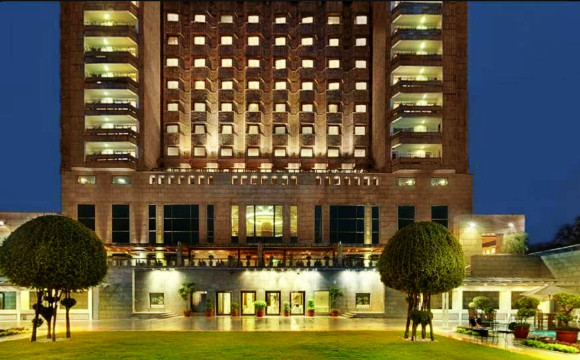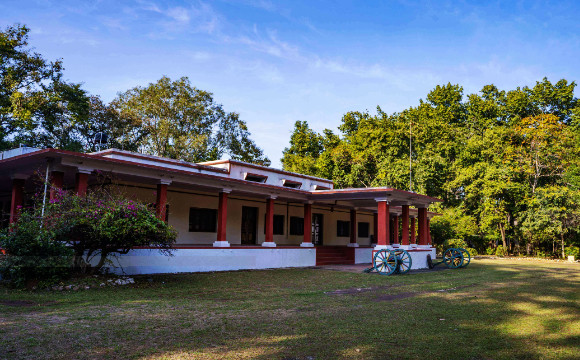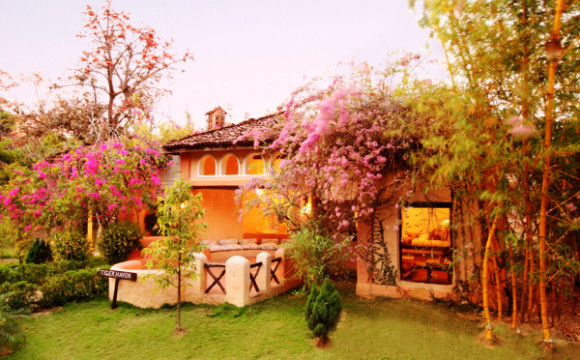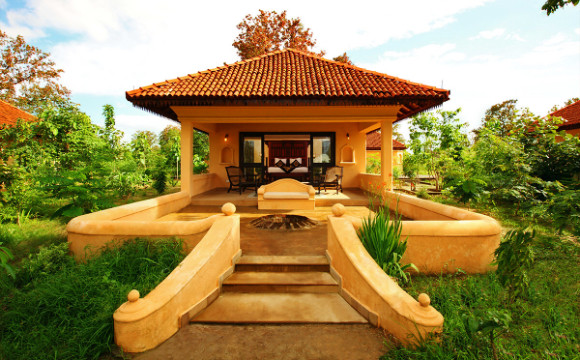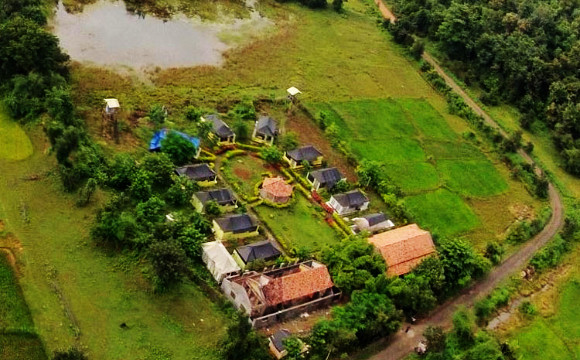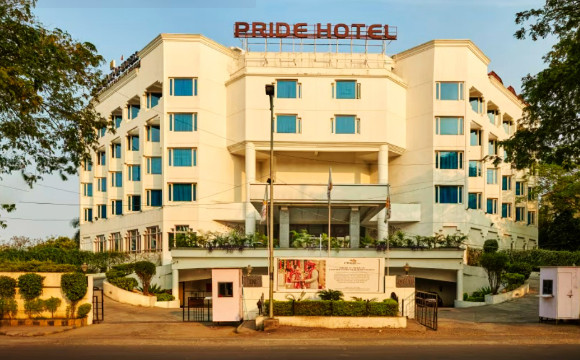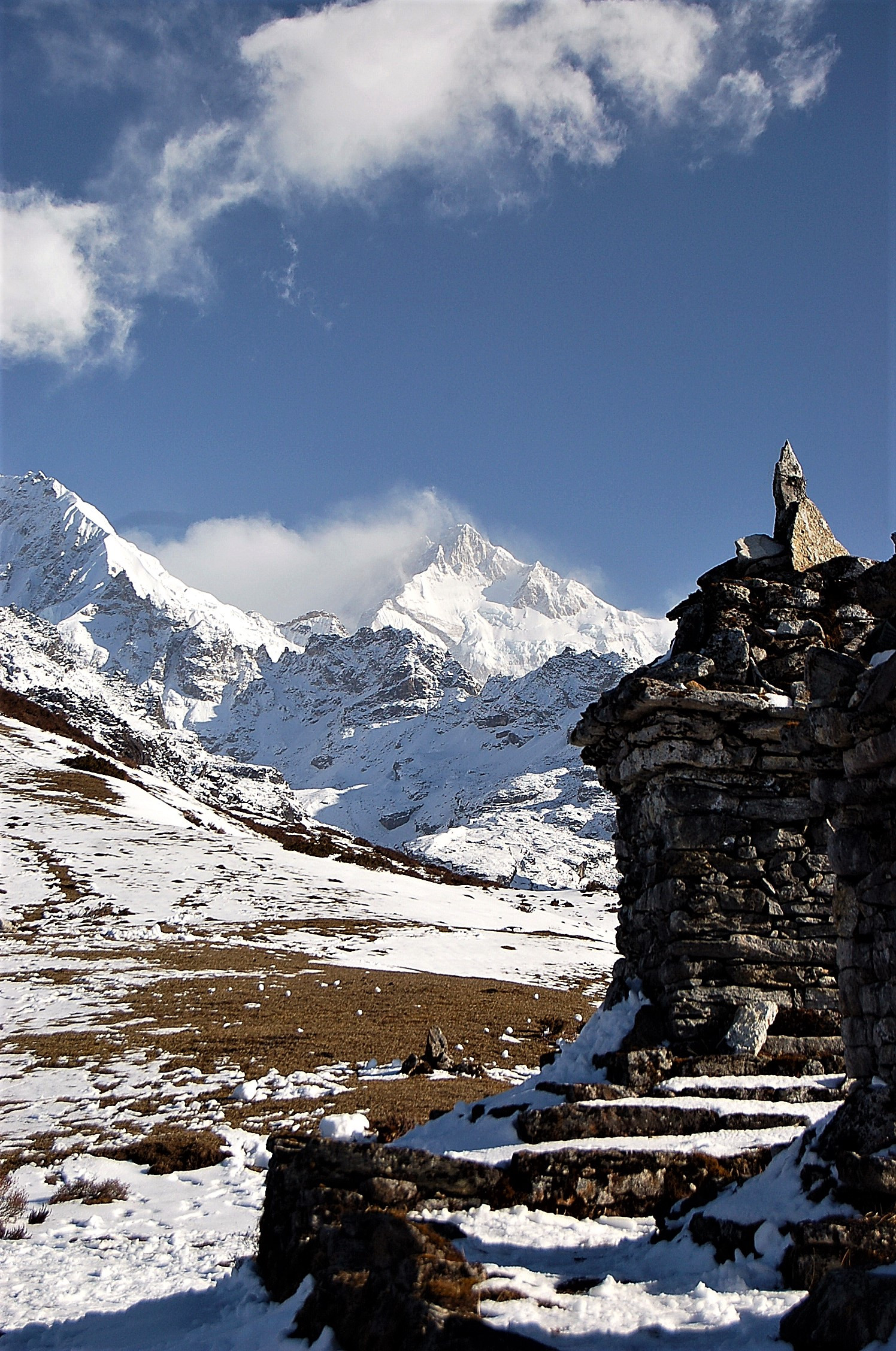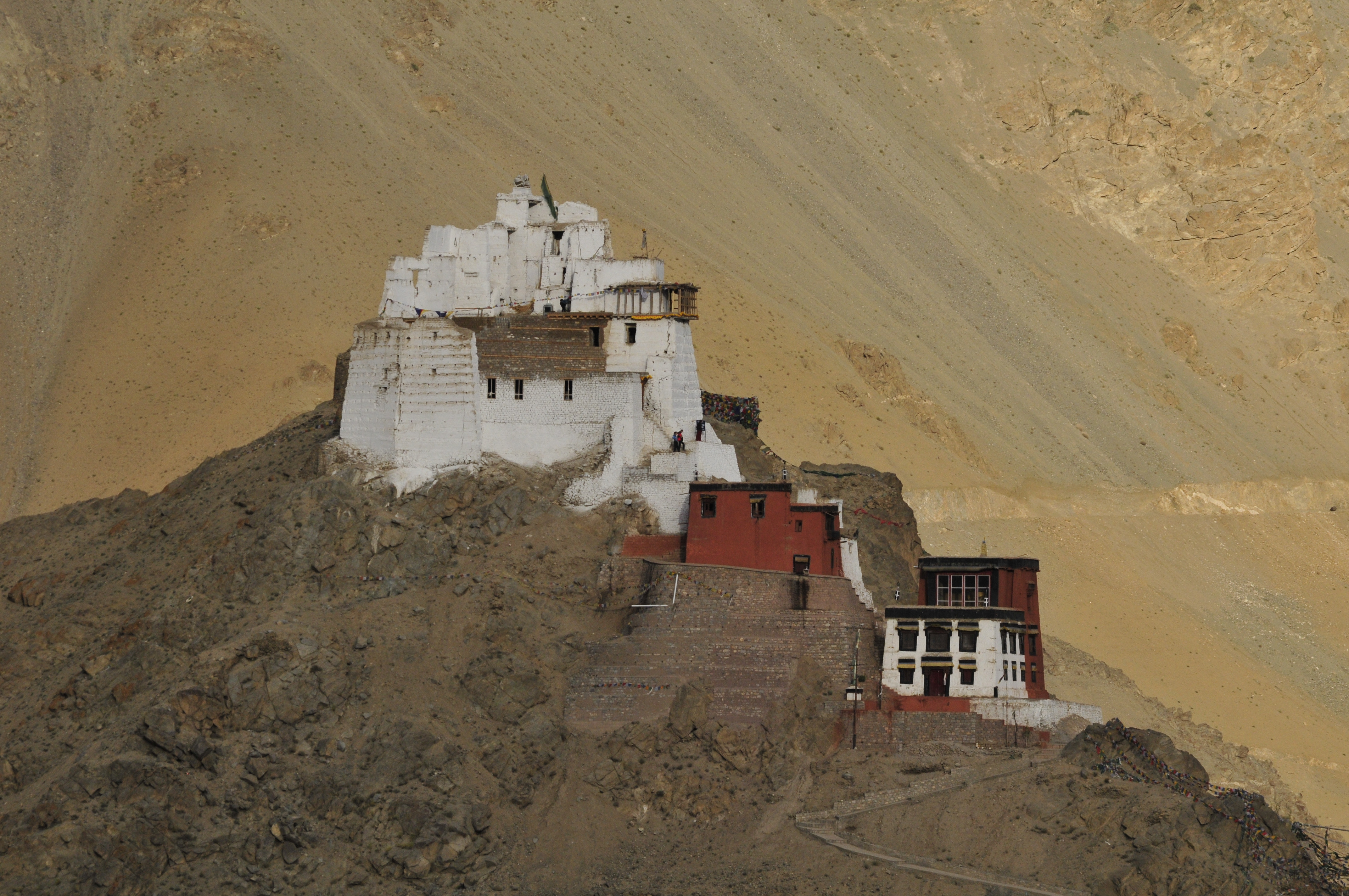Quest for Royal Bengal Tiger
Highlight
- Exclusive theme-Man & Environment Conservation site visits
- Tiger, Sloth Bear & Leopard possible, Nagarhole, Bandipur, Kabini
- Lion-tailed Macaque & Nilgiri Langur, Athirappally
- White-bellied Treepie, Nilgiri Pipit & White-breasted Laughing-thrush, Munnar
- Visit tea plantations, Nilgiri Tahr, Munnar
- Malabar Trogon, Malabar Grey Hornbill &, if lucky, Sri Lanka Frogmouth, Thattekad Salim Ali Bird Sanctuary
- Stay on a houseboat & explore Kerala’s famous waterways
- Evening trail in Mudumalai Sanctuary
- Kokkerabellur Pelicanery visit
- Tribal cooking session
- Riverside walks in Athirappally
- Mararyoor & Chinnar visits
- Wetland birding in Kerala Backwaters
- Drive through the Nilgiri Biosphere Sanctuaries
- Houseboat cruise followed by Overnight stay on board
- Beach experience
- Led by expert local naturalist guides
Trip Facts
Start & End Point
Delhi/Nagpur
Duration
12D/11N
Best Time
Spring/Autumn
Grade
Easy to Moderate
Activity
Wildlife
Accomodation
3-5* Hotel/Resort
Meals
11B / 9L / 11D
Max. Elevation
Itinerary
Welcome to India! Upon arrival in New Delhi a travel-to-nature Asia guide/representative will be at the airport to greet and take us to our hotel. Please look out for your name-card once you exit out of arrival area.
This afternoon, explore the new sectors of India's vibrant capital as we drive through Lutyen’s Delhi, passing Rashtrapati Bhavan, India Gate and the Old Secretariat. Next we head to Humayun’s Tomb, a complex commissioned by Humayun's wife, Hamida Banu Begum, in 1562 as the place of her husband’s burial. This UNESCO World Heritage Site was the first garden-tomb on the Indian subcontinent and the first structure to use red sandstone on such a grand scale. We also visit the Qutub Minar, which at nearly 240 feet is the world's tallest brick minaret. Construction began in 1193 under the orders of India's first Muslim ruler, Qutub-ud-din Aibak. It is notable for being one of the earliest and most prominent examples of Indo-Islamic architecture and is also listed as a UNESCO World Heritage Site. After this exhilarating introduction to the country, enjoy a welcome dinner this evening and an orientation to our India wildlife safari by our Tour Leader.

Accommodation
Surya Hotel
Meals
N/a
Maximum Altitude
Transfer to the airport early this morning for our flight south to Jabalpur. Upon arrival local representative will meet as come out of the airport and we continue by road through the countryside of Madhya Pradesh to Bandhavgarh National Park. An essential stop on any serious India safari, Bandhavgarh is renowned for one of the country's highest concentrations of Bengal tigers. Originally established as a national park in 1968, Bandhavgarh was declared a protected tiger reserve under Project Tiger in 1993. At 444 square miles, it is a relatively small park with a thriving tiger population, offering guests a good chance of encountering them, as well as other distinctive Indian wildlife. Check in to Kings Lodge, surrounded by wild natural forest just outside the park boundary, then, time permitting, we set out on our first wildlife drive in open 4x4 safari vehicles.

Accommodation
Hotel/Resort
Meals
Breakfast, Lunch, Dinner
Maximum Altitude
Over the next two days, we explore Bandhavgarh’s varied habitats on morning and afternoon wildlife drives. Predominantly covered with Sal and mixed deciduous forest, thickets of bamboo and expansive grasslands that line the stream valleys, the park’s hilly terrain harbours one of the highest densities of tigers in the world. Bandhavgarh was once a prime hunting reserve for the Maharajahs of Rewa, where Maharaja Raman Singh himself shot an astounding 111 tigers by 1914. Maharaja of Rewa, who caught a white tiger cub here, brought to his court and later tried his hand at breeding white tigers. Mohan, the name of the Maharaja Martand Singh’s tiger, was initially mated with a normal coloured Bengal tigress. However, the litter did not produce the desired white coat colour. This was only achieved by inbreeding with the mating of Mohan and one of his daughters.Today, all captive white tigers can be traced back to Mohan and his daughter.
Bandhavgarh National Park today is a pacesetter in tiger protection. With tigers at the apex of the food chain, Bandhavgarh’s rich biodiversity includes a multitude of other wildlife. We'll hope to see a sampler of its 37 mammal species, among which are leopard, jungle cat, civet, wild boar, sambar, spotted deer, muntjac (barking deer), sloth bear and Asiatic jackal. Some 250 bird species, 70 different butterflies and various reptiles round out the diverse wildlife population.

Accommodation
Hotel/Resort
Meals
Breakfast, Lunch, Dinner
Maximum Altitude
Embark on a morning drive to Kanha National Park, situated in central India in the Satpura Hills, the park covers 750 square miles of rich and varied wildlife habitat. Its lush Sal and Bamboo forests, grassy meadows and ravines provided inspiration to Rudyard Kipling for his famous collection of stories in The Jungle Book. Kanha was established as a national park in 1955 and forms the core of the Kanha Tiger Reserve, created in 1974 under India's Project Tiger. The park's landmark achievement is the preservation of the rare barasingha, an endangered swamp deer with 12-point antlers, saving it from near-extinction. Strict conservation programs for the overall protection of the park's fauna and flora make Kanha one of the most exemplary national parks in Asia. From our ecolodge base in the tiger heartland of the world, learn in depth about the Bengal tiger and its habitat and observe how conservation travel directly benefits local communities and the tiger reserve.

Accommodation
Hotel/Resort
Meals
Breakfast, Lunch, Dinner
Maximum Altitude
Spend two full days in search of Bengal tigers and other wildlife on excursions in open 4x4 vehicles. Scenic Kanha, once a hunting ground for imperial rulers and viceroys, is now one of India’s most important conservation reserves. With ideal habitat for tigers and their prey, it offers some of India’s best tiger viewing, though it can take effort to locate them in the sun-dappled scrub forest that provides superb camouflage for many species. Greet the dawn each day with an early wildlife drive, entering the park just as the sun’s rays break over the jungle. The open meadows where herbivores graze attract tiger, leopard and dhole (wild dog) to the edges of the clearings, and we'll hope to see some of these predators on the hunt. The Banjaar River bordering the park provides a steady water source for wildlife. Dense jungle interspersed with vast grassy meadows called maidans support a range of species similar to those in Bandhavgarh. Other mammals we might see include chowsingha (four-horned antelope), common langur, gaur (the world's largest wild ox), rhesus monkeys and occasionally leopard.

Accommodation
Hotel/Resort
Meals
Breakfast, Lunch, Dinner
Maximum Altitude
We set off to Pench National Park. After about two and hours we reach our destination. Upon arrival we check in at luxury jungle lodge situated directly in the park. After lunch we start our jeep safari. Together with our Tour Leader, we keep an eye out for tigers and other inhabitants of the national park.

Accommodation
Hotel/Resort
Meals
Breakfast, Lunch, Dinner
Maximum Altitude
Embark on a morning drive to Tadoba-Andhari National Park. We should reach our hotel for lunch. After lunch we start our jeep safari.
Tadoba Protected area in the Indian state of Maharashtra currently offers the best chance of getting tigers and other shy wildlife in the best light in front of the camera. At the last count, 120 tigers were recorded in the reserve.
The Tadoba-Andhari National Park in the Indian state of Maharashtra currently covers an area of 1727 square kilometres. Further expansion is planned. The Tadoba-Andhari National Park is one of 43 Indian protected areas that are making special efforts to protect the striped big cats under the term Project Tiger. These are obviously particularly successful here. The national park is currently considered the best address for tiger observations.
Leopards can also often be seen when "setting out with tigers", as well as the extremely rare sloth bears, hyenas, jackals, mongooses and various smaller wild cat species. They all find a sumptuously laid table here, because their prey animals find plenty of food here: the mighty gaur, the largest wild cattle on earth, lives here, as do wild boars, various deer species and antelopes.
The 120-hectare Lake Tadoba is home to marsh crocodiles and various species of turtles. In addition, there are 260 species of birds and 74 species of butterflies in the park.

Accommodation
Hotel/Resort
Meals
Breakfast, Lunch, Dinner
Maximum Altitude
We Spend two full days in quest of Bengal tigers and other wildlife on daily wildlife safaris, either by off-road vehicle or by bicycle, boat, raft or on foot. During the safaris, guests learn to recognise the signs of the jungle: They identify tracks, interpret sounds and learn what tasks animals and plants perform in the natural habitat.
Checking the camera traps clearly shows that all living creatures are "creatures of habit". Encounters with local villagers reveal how the people of this area have lived in and with the wilderness since time immemorial and what measures are necessary to reconcile their needs and the necessities of nature conservation.
There are several well-camouflaged hiding places in the park where you can lie in wait with your camera. During visits to indigenous villages in the national park, one meets inhabitants who are preparing with heavy hearts to relocate to the fringe areas.
They have to change their way of life and reorganize their livelihoods - only very few will be able to collect honey or plants and cut wood. Farming and animal husbandry have to be rebuilt in new settlements outside the national park.
Encounters with former poachers show that today they make an important contribution to the protection of the forest as experienced trackers, excellent observers and caretakers of the camera traps. They know the routes of the big cats, see the birds and hear the sounds of the park long before excited city people, and so they are also excellent tourist guides.
In the evening there is a campfire and multimedia presentations from Tadoba and other national parks.

Accommodation
Hotel/Resort
Meals
Breakfast, Lunch, Dinner
Maximum Altitude
In the morning, enjoy a hearty breakfast or a last lap around the pool. After leisurely breakfast, we return to Nagpur. 148 km. Here we have booked rooms for you in a hotel near the airport, which you can use to freshen up and relax until your departure for the airport.

Accommodation

Meals

Maximum Altitude
Date & Cost
Price: US$ 2,760 per person (Twin Sharing | Based on Minimum 4 Travelers)
Single Supplement: US$ 745
Include
- Airport (pick up/drop off) transfers by private A/C vehicle
- Twin-Sharing accommodation in all Hotel/Resort as mentioned or similar
- Daily breakfast throughout the trip, other meals as mentioned in the itinerary
- All sightseeing and long-distance transportation in a private air-conditioned vehicle (cars/SUVs or mini/micro-van etc. depending on group size). This includes toll taxes, parking, allowance for the driver, outstation overnight charges for the driver
- Services of a local guide for sightseeing tours
- Jungle activities in National Park/Reserves as mentioned
- 3 Game Drives into Bandhavgarh National Park by jeep/Jeeps on sharing basis including entry ticket
- 3 Game Drives into Kanha National Park by jeep/jeeps on sharing basis including entry ticket
- 1 Game Drive into Pench National Park by jeep/Jeeps on sharing basis including entry ticket
- 3 Game Drives into Tadoba National Park by Jeep/jeeps on sharing basis including entry ticket
- Entrance fees (national parks/conservation areas/monuments etc.)
Exclude
- International & domestic air tickets
- Visa fee
- Travel insurance
- Meals not mentioned in the itinerary
- Personal equipment and equipment
- Tips for guide/s, driver, hotel staff and porters
- Items of personal nature such as alcoholic beverages, soft drinks, laundry, and other unforeseen expenses
- Items/services not listed in "included"
- Extra expenses/payment for 'OPTIONAL’ activities/programs if opted in
Accomodation
Map
Frequently Asked Questions
While tiger sightings cannot be guaranteed, the parks visited on this trip have some of the highest densities of Royal Bengal Tigers in India. With experienced naturalists and safari guides, the chances of spotting a tiger are significantly increased.
Yes, this trip is family-friendly, but it is ideal for those with an interest in wildlife and nature. Children who enjoy safaris and learning about animals will find this experience fascinating.
The best time to spot Royal Bengal Tigers is from October to June. During this period, the dry season (March to May) is particularly favorable as animals gather around water sources.
Accommodations range from eco-lodges and jungle resorts to comfortable hotels near the national parks. All accommodations are selected to enhance your experience with proximity to nature and local culture.
Yes, the safaris are conducted in open-top vehicles and led by expert guides and drivers who prioritize safety and follow park regulations.
Pack lightweight, neutral-colored clothing, a wide-brimmed hat, sunscreen, insect repellent, sturdy walking shoes, binoculars, a camera, and any personal essentials. A detailed packing list will be provided after booking.
Absolutely! Wildlife photography is a highlight of this trip. Bring a camera with a zoom lens for the best results. Many parks charge a small additional fee for camera equipment.
Yes, most meals are included, and they feature a mix of local and international cuisine. If you have dietary restrictions, please inform us in advance.
Yes, most travelers require a visa to visit India. You can apply for an e-Visa online before departure. Ensure your passport is valid for at least six months from your travel dates.
This trip is relatively moderate, with most activities involving safari drives and short walks. However, the hot weather in some seasons may be challenging, so staying hydrated is essential.
Yes, this trip includes insights into tiger conservation efforts, local ecosystems, and the challenges of protecting endangered species in India. Our guides are knowledgeable and eager to share their expertise.
